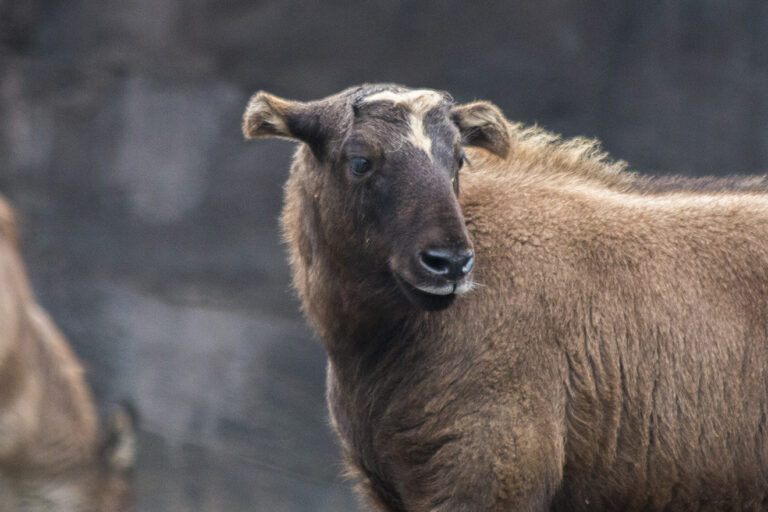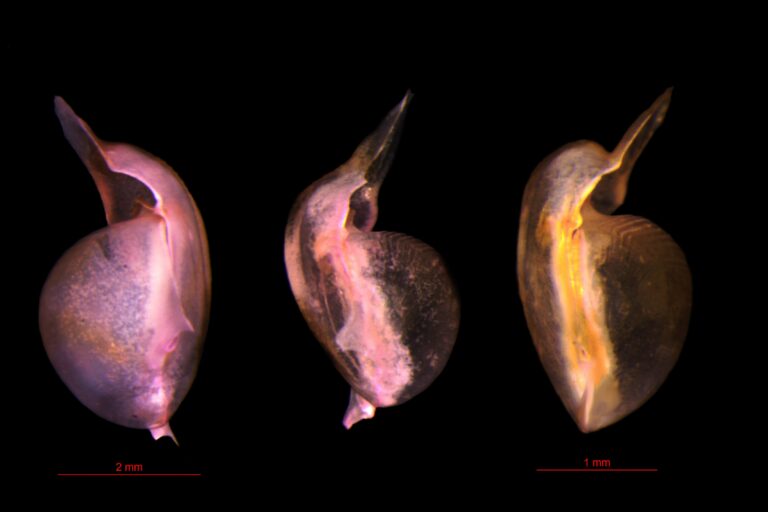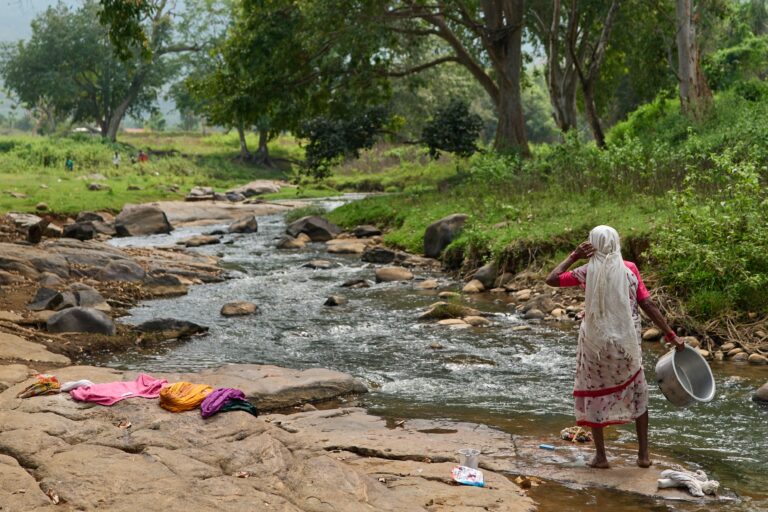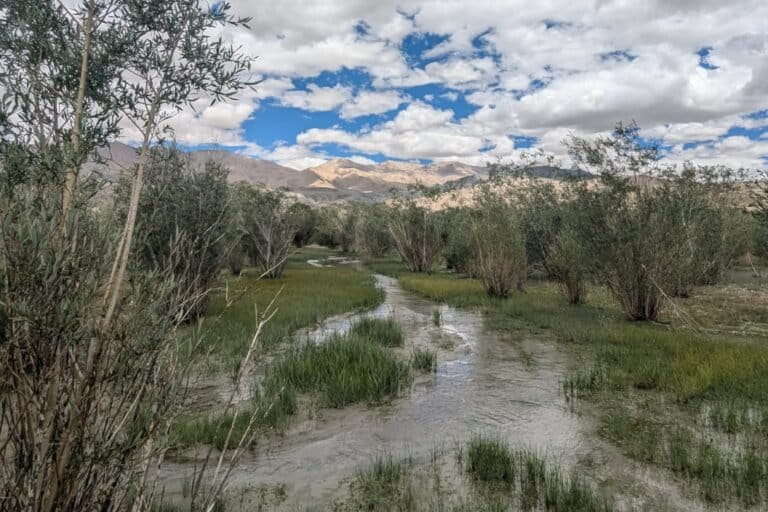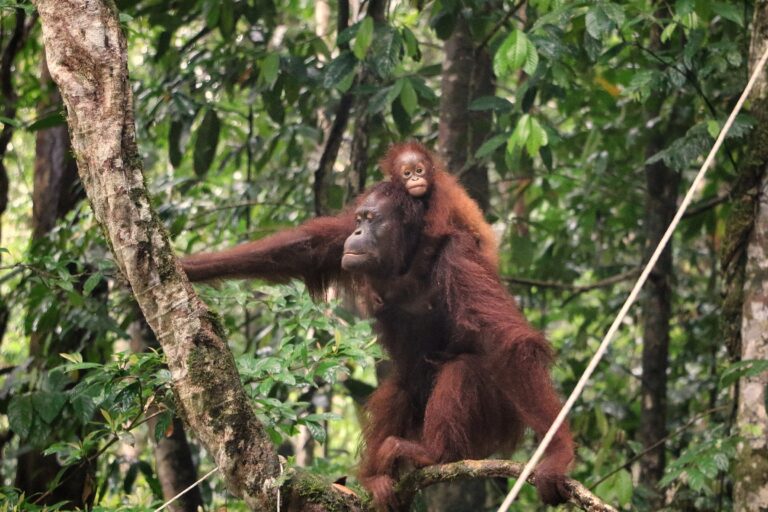- Once a highland where wildlife sheltered from floods, the growing town of Tezpur along the Brahmaputra, sees regular interactions between large mammals such as rhinos, tigers, elephants and humans.
- Protected areas such as the Kaziranga National Park, rim Tezpur and wildlife use the existing reserve forests around the town as corridors in their transit.
- Given the town’s urban development and its location in a wildlife-rich area, experts suggest understanding the growth pattern of the city in the future. This information can be integrated into planning for future growth without harming biodiversity.
When 25-year-old e-rickshaw driver Javed Ali went out for work on the morning of November 23 last year, he had little idea that he would return home with the nightmarish experience of a scar, caused by a tiger’s claw, on his hamstring. Ali was one among the thousands of curious onlookers who had gathered at Borguri village in Napaam area on the outskirts of Tezpur, along the banks of the river Brahmaputra in Assam, to see the tiger that had strayed out from Kaziranga National Park (KNP) and taken refuge there. The tiger, stressed and alarmed at the presence of such a large gathering, went after the crowd; a video that went viral, revealed that the tiger fell with Ali on a ditch now covered with sand.
Narrating his ordeal, Ali, who hails from Ahotguri-Balitika village near Tezpur, told Mongabay-India, “Around 2000-3000 people had gathered on the spot to see the Bengal tiger. It suddenly chased us. Seeing no other way out, I jumped in the ditch and the tiger fell on top of me. However, it soon left me and ran to a different side.” Apart from Ali, the tiger had also injured a 2-year-old child from Borguri village. The animal was finally driven back to the forest after a daylong operation carried out by the forest department.
Encountering a tiger is nothing new for the inhabitants of Tezpur in northeast India. Once a highland where animals used to shelter from the Brahmaputra floods, the expanding town situated in the state’s Sonitpur district, has recorded multiple instances of human-tiger interactions and is embedded in a landscape that is in the crosshairs of human-wildlife conflicts, especially associated with large mammals. Tezpur surrounded by protected areas is the only major town in the biodiversity-rich state of Assam with frequent records of encounters with the big three—rhino, elephant and tiger.

“The primary reason behind incursion of wildlife into the town is its location: it’s flanked on all sides by multiple critical wildlife habitats,” noted Saurav Borkataki, a wildlife rescuer and former honorary wildlife warden of Sonitpur.
While the state government made a push for the town to be included in India’s Smart City coverage in 2018 (it isn’t listed yet), civic officials hope that concrete plans can be drawn up to incorporate and address wildlife-associated concerns in the urban agglomeration rimmed by protected areas: Nameri National Park and Sonai-Rupai Wildlife Sanctuary in the north; in the east is Kaziranga National Park and in the west, there is Orang National Park and in the south, Laokhowa-Bura Chapori Wildlife Sanctuary abuts the town. With protected areas sprinkled along the Brahmaputra, the river’s islands also form corridors, connecting habitats, facilitating the movement of the large mammals.
As reserve forests diminish in Tezpur and urban infrastructure flourish, experts have pressed for reinforcing wildlife management with human and technological resources, conserving key habitats and drawing on research that predicts the growth of the town to minimise negative interactions between humans and wildlife in the landscape.

Surrounded by protected areas (PAs)
Tezpur, a growing town, 175 km northeast of the state’s capital Dispur (a Guwahati suburb), is home to a population of over 1,00,000 as per the 2011 census. It is the largest town on the north bank of the Brahmaputra. “With regards to animal presence and activity, it is a single landscape which is connected by the river Brahmaputra and its tributaries,” said P. Sivakumar, KNP Director.
Animals from KNP stray into Dolabari—an outgrowth three km away from the town. “On multiple occasions, tigers were found to have been sheltering in the premises of the All India Radio (AIR) station, Tezpur, and the North Eastern Regional Institute of Water and Land Management (NERIWALM), both located in Dolabari,” Sivakumar noted.
Nameri, situated at a distance of 37 km from Tezpur, falls under the jurisdiction of Pankaj Sarma, Divisional Forest Officer (DFO), Western Assam. Sarma said that while elephants sometimes foray into Tezpur from Nameri and Sonai-Rupai, tigers mostly enter the town from KNP.
Samshul Ali, a wildlife veterinarian working for Wildlife Trust of India (WTI) has often fielded calls from Tezpur on wild animals foraying into the town from KNP. Ali, sharing some of his experiences with Mongabay-India, said, “I have handled 3-4 cases of tigers in Tezpur, mostly in the Dolabari area. In all the cases humans were injured by tigers but the attacks were primarily in retaliation, as the tigers were agitated on encountering crowds. Once a rhino from KNP forayed onto the National Highway near Tezpur. We managed to send it to Panpur reserve but it resurfaced a week later in Sootea, a small town 60 km northeast of Tezpur. It took us a week to finally push the rhino back to the jungle.”
In March 2004, an adult royal Bengal tiger suspected to be from either KNP or Laokhowa crossed the Brahmaputra and entered the Lalmati area in Tezpur town. Stressed in the unfamiliar urbanscape, the animal attacked three persons resulting in the death of two youth. Bijoy Gogoi, a senior wildlife veterinarian at Assam State Zoo in Guwahati, was called in to tranquilise the tiger. He later narrated the entire incident in his book Bonyoprani: Du-xahohik Abhiyan (Wildlife: Adventurous Expedition) and highlighted the fact that in the absence of a cage to put the tranquilised big cat in for transporting it to KNP, they’d to keep the animal inside the lock-up facilities of Tezpur Police Station for hours before a cage could be finally arranged.
In contrast, Sandeep Singh Bendi, DFO, Mangaldoi, under whose jurisdiction Orang falls, observed that while Orang has a good density of both rhino and tigers and animals stray from the park at times, they generally don’t reach Tezpur, which is about 57 km away from the park. “But there are instances when tigers and rhinos from Orang have reached other towns in Sonitpur district like Dhekiajuli,” he says.
Tezpur’s complex landscape keeps forest guards and administrators on their toes. They have to keep a constant vigil on animal movements into the urban space and human settlements, pointed out Ranjit Konwar, the divisional forest officer (DFO) of Sonitpur-West. “We remain alert to be able to successfully respond to potential incursions of wild animals into the town.”
WWF-India chose Tezpur as its regional headquarters because of its proximity to critical wildlife habitats and the highly biodiverse state of Arunachal Pradesh. “When we were in school, there were multiple incidents of rhinos entering the town. I remember going to watch one such wandering rhino from school,” recalled Anupam Sarmah, Head of Assam Landscapes, WWF-India, who’s grown up in Tezpur.
The civic authorities also reach out to the forest department in the event of wildlife-associated concerns. Pushpa Deka, outgoing chairperson of Tezpur Municipal Board said: “Whenever any wildlife enters the city, the municipal authorities reach out to the forest department as promptly as possible and collaborate with them in handling the situation.”
Deka also said that “so far they do not have concrete future plans drawn out about how to deal wildlife issues in the growing city, but generally the issue of wildlife is taken into account when it comes to making decisions regarding the city’s growth and expansion”. She hopes “in future, the issue would be taken more seriously and concrete plans would be devised”.

Bhomoraguri – a transit point
When Mongabay-India visited Tezpur in January 2021, wildlife rescuer and former honorary wildlife warden Sourav Borkataki received a call from an official of the Tezpur Municipal Corporation informing him about a hog deer that’d entered the Jahaj Ghat area of Tezpur after crossing the Brahmaputra. Within two hours, the animal was captured, treated and released in Bhomoraguri Reserve Forest 12 km east of Tezpur. Bhomoraguri Reserve Forest, a small patch of forest spanning 156.17 hectares right on the bank of the Brahmaputra, serves as a transit point for animals moving towards Tezpur.
Bhomoraguri is one of few reserve forests that still stand around Tezpur. A 2011 paper documents the fall in forest cover from 43 percent in 1973 to 16 percent in 2007 in Sonitpur district. The degraded forest cover increased overall from nine percent in 1973 to 30 percent in 2007, while crop land increased from 28 to 33 percent and tea plantations increased from 14 to 15 percent in that period.
Borkataki, who has released many animals in the Bhomoraguri forest, said, “Bhomoraguri is linked with KNP. If we release the animals in that forest, they can go back to KNP by crossing the Brahmaputra river. Species such as tigers, elephants and deer use Bhomoraguri as a transit point. The forest is also home to many varieties of snakes including pythons.”
Forest guard-turned-author Ghanashyam Rajbongshi relates an incident from 1991-92 when a tigress became a man-eater, it used to drag its kill to the forests of Bhomoraguri terrorising the adjacent villagers. “It had become a scourge for the people in the Panchmile area. People stopped coming out of their houses after sundown. It was like a tiger curfew. Finally, the tigress was caged by the forest department with the help of the famous hunter Ziaur Rahman,” Rajbongshi told Mongabay-India. He has narrated this incident in detail in a chapter titled Bhomoragurir Rani (The Queen of Bhomoraguri) in his latest book Bonrojar Diary (The diary of the King of the Forest).

Tackling maximum issues with minimum resources
Wildlife rescuer Borkataki says when a wild animal enters human habitation the first challenge they face is that of controlling and dispersing the mob of curious onlookers. “Many times the presence of a loud noisy mob puts the animal in stress—sometimes causing them to attack the onlookers as has happened in the case of the tiger that mauled Javed Ali,” Borkataki said.
Shortage of forest staff, inadequate equipment and human resource partitioning to handle human-wildlife conflicts has beleaguered the forest department and administration.
Sonitpur, where Tezpur lies, is one of those districts in Assam that is severely affected by human-wildlife conflicts—especially human-elephant conflict (HEC). As per the data available with the forest department, in the period 1990-2019, HEC resulted in the death of 209 elephants and 254 humans. Some of these fatal confrontations have occurred within a radius of 10 km from Tezpur town, added Borkataki. “Forest guards and administrators in Tezpur have to devote a considerable amount of time and resource to the uphill task of tackling HEC in various parts of Sonitpur,” he said. “As such, dealing with incursions of wildlife into Tezpur sometimes take a back-seat especially when HECs are on the uptick in other parts of the district.”
“The forest department is heavily understaffed and underequipped and wanting in resources,” Borkataki explained. Forest department records reviewed by Mongabay-India show that the forest department is short-staffed by 48 percent in Sonitpur-West. Additionally, the town lacks a proper rescue and rehabilitation centre.
Tirath Singh, in-charge of the Intensive Cattle Development Project (ICDP), has been providing immediate medical care to wild animals rescued from all around Tezpur. He says that he gets about ten rescue cases on an average per month. He stressed that the town needs a rescue-cum-rehabilitation centre. “If we get in-patients (animals which can’t be released in the forests on the same day) we refer them to the Panbari Rescue Centre in Kaziranga. We need a fully equipped rescue and rehabilitation centre in Tezpur so that proper treatment can be meted out to the animals at the earliest in cases of emergency.”
Another major challenge faced by the forest department here is compensation for the victims of wildlife attack. The struggle for victims of human-wildlife conflicts to get proper compensation is not unique to Tezpur and similar cases have been recorded throughout Assam. Inadequate or lack of compensation in these instances can trigger hostility towards wildlife.
“A proper and timely compensation system could at least mitigate cruel retaliatory actions on the part of the villagers affected by wandering wildlife and keep their existing tolerance threshold intact,” observed Pratibha Deka, an assistant professor at the Department of Environmental Sciences in Tezpur University.
Javed Ali, who was scratched by the tiger in Borguri, tells Mongabay-India, “I have been given 8-9 injections till now. The first one was free, but the rest cost Rs 360 each. I have not been able to go to work for two months and it would help to get some compensation from the government.”
“The challenge in managing wildlife here”, said Ranjit Konwar, the DFO of Sonitpur West, is about “tackling a maximum of issues with minimum resources at our disposal.”
A growing city and future wildlife management
A 2013 study conducted by Gauhati University and Tezpur College found that the spatial pattern of population growth in the town shows a relatively higher growth in the eastern half of the town, including in areas such as Dolabari, where tigers have strayed into human habitations on multiple occasions in the past. It is the eastern half of the town that sits closer to KNP and Bhomoraguri RF.
Rathin Barman, Joint Director of WTI, says animals from the PAs on the south bank of the Brahmaputra, such as KNP and Laokhowa-Burachapori, move toward Tezpur during the flood because historically the town used to be a natural highland. “With the expansion of human settlements, houses and other linear structures, many traditional migratory routes have been blocked, which is why many distraught animals land right in the town.”
“Given that linear infrastructure has a great propensity to block passages of wild animals and thus affect their movement and migration patterns, it is of critical importance to study the patterns of occurrence of wild animals in Tezpur and its outskirts prior to executing any future development projects,” says Deka of Tezpur University. Further, it is important to check the unplanned conversion of agricultural lands into industrial lands as the former, in contrast to the latter, offer passage to wildlife, she says.
To secure traditional migratory routes of elephant herds in various PAs of Sonitpur from the jaws of unplanned development, the Sonitpur forest department has proposed to notify an elephant corridor, namely ‘Nameri Sonai-Rupai Arimora Chapori’, covering an area of 25.68 sq. km. just outside Tezpur.
“There are paddy fields and houses on some patches of land that has been proposed to be conserved as elephant corridors. The government will need to compensate the land-owners before going ahead with the project,” Hiten Baishya, Co-ordinator, Elephant Conservation for WWF-India says.
“To strike a balance between urban growth and preservation of wildlife, in ecologically sensitive towns such as Tezpur, a futuristic study should be conducted on the kind of development that’s going to take place in the next 50 years,” says Sarmah of WWF-India. “Such futuristic studies will help set-up roadmaps for future management of wildlife in the town.”
Banner image: An elephant in Kaziranga National Park. Photo by A. J. T. Johnsingh, WWF-India and NCF/Wikimedia Commons.








